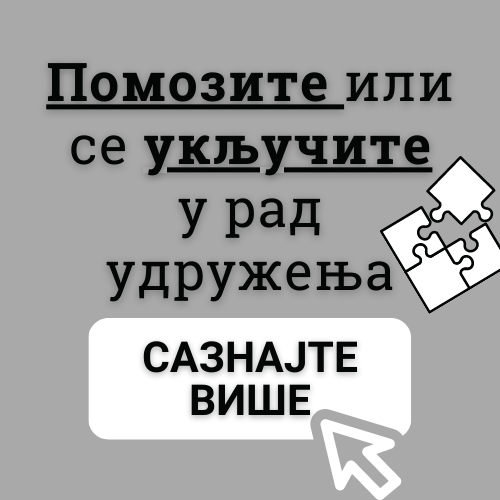The analysis has been made according to the place of birth and according to the current revision of the “Victims of 1941 – 1945 War” list from 1964. This analysis has been made by the Senior Curator of the Museum of Genocide Victims from Belgrade, Jovan Mirković, and he presented it at the promotion of the book: “Bilogora and Grubišno Polje 1941 – 1911” by Milan Bastašić. The promotion was held in Belgrade on February 10th, 2010 at the Academy for Security and Diplomacy.
Jovan Mirković: A word at the book promotion of: Bilogora and Grubišno Polje 1941 – 1991 by Milan Bastašić
(Belgrade, 10th February, 2010, Academy for Security and Diplomacy)
By studying published sources and books on the Jasenovac camps I have determined that most of them are memoirs and regional and local historiography books, if we categorise literature in such a way, and that they are the most important source of information, apart from rare examples of published expert and scientific works.
The book by Dr. Milan Bastašić belongs to the category of memoirs, but in terms of area it covers it belongs to the category of regional and local historiography, which without a doubt has significant importance in completing information on events in a wider area with events or regional and local character.
The area that Dr. Bastašić speaks of: Bilogora and Grubišno Polje, has almost not been covered at all in the historiography of the Second World War, and yet numerous mass crimes were committed there. It is the most western ethnic area of Serbian population and the first mass crimes by the NDH were committed exactly there: in late April 1941 the first mass incarceration of population from Grubišno Polje and the slaughter in Gudovac near Bjelovar. This forward area of the Serbian ethnic corps, according to the author, was also the first to be struck by a repeated crime against the Serbs in 1990-ties.
While preparing to present this book I decided not to talk about the book itself, because others are going to do so, but rather to present an analysis from available information on the suffering of the population in Grubišno Polje municipality in the Second World war, in connection with topics I personally deal with: the crimes of the NDH in the Jasenovac camps.
The Ustasha movement was a „synthesis of Starčević’s state law and peasant ideology of the Radić brothers, which grew out of these two the strongest political ideologies in the Croatian people… and in the ‘Ustasha Principles’ encompasses… both of those ideologies.“ The Ustasha movement is a successor of the part of Croatian nationalism which had the aim to catholicise the society and the state, and all policies were subjected to it.
The ideology of the Ustasha movement is based on racist, extreme nationalist and clerical policy, with basic tendency to create „pure Croatian living space“, which needs to provide the existence of the „pure Croatian nation“. The precondition to achieve these tendencies was the biological destruction („extermination“) of Serbs and Jews, who were declared „the greatest enemies of the Croatian people“, and therefore „there is no room for them in Croatia“. The Romany people, as non-Aryan, lower race, were joined to these two groups. Achieving these goals also required the „internal cleansing“, i.e. destruction of those Croatian and Muslim elements which with their „non-Croatian behaviour“ created a „stain on the body of pure Croatian nation“, for which they were considered traitors. The new authorities tried not only to apply terror in practice, but to legalise the racist policy and policy of terror into the legal system by introducing a series of laws and bylaws. Already in the very beginning of the NDH, there was a whole package of so-called „race laws“.
According to some historians, the Ustasha movement should not be called fascist, because for Pavelić and his followers it would be a compliment, as Italian fascist journalist and author Cruzio Malaparte said. They „were and are political and intellectual Pigmies“; they were „too primitive for true fascists“.
The genocide character of the Independent State of Croatia cannot be denied, because it is clear that the intention of genocide over certain ethnic, religious and racial groups was there, which was confirmed by the practices of the Ustasha organisation and state, which committed not only war crimes, but also crimes of genocide over Serbs, Jews and Romany.
There is no doubt that there is a responsibility for genocide, as the most severe type of crime against humanity, not only by individuals, the perpetrators of the crime, but also the Ustasha organisation, Independent State of Croatia and its institutions, and also the responsibility of ideologists who provided the basis for this organisation and its creation. The genocide was committed not only by members of the political organisation (Ustashas) and party military units (Ustasha troops and the Ustashas Supervision Service – UNS), but also all state structures, from police and military units to the administration.
From its constitution, the NDH formed concentration camps (collective, work, concentration camps, or any other name which was used for different collection sites, until they got their name with social character) in which they imprisoned „unfit elements“ according to ethnicity, religion, race, as well as ideological and political opponents of the Ustasha regime. The most significant are the Gospić group (Jadovno) and the Jasenovac group of camps, as examples of extermination camps (Vernichtungslager).
These two camp systems are especially important for the suffering of the Grubišno Polje population.
In a video presentation I am going to present the analysis of data from the „Victims of 1941 – 1945 War“ Database run by in the Museum of Genocide Victims according to the current revision of the list from 1964 and according to victims identified by name. One of the important tasks of the Museum is the revision, i.e. addendum of the victims of 1941 – 1945 war list from 1964, by inputting verified identification data for persons killed, regardless of their ethnicity, religion, race, ideology, or political and military membership, along with inputting valid data on victim’s category and persons responsible for the suffering. While working on the revision of this list we are trying to input as much as identification data on human loss during the Second World War as possible. We are aware of the fact that it is hard to make up for the lost time and that this is going to be a long-term work which will not give us final results. But every piece of data we input is a contribution to naming the victims and by that making them human again, turning numbers into people, which is a debt that we as civilization must pay to the victims. I must stress that these are not nearly final results, but only the level of identification achieved so far, which is, after all, a good basis for analyses.



